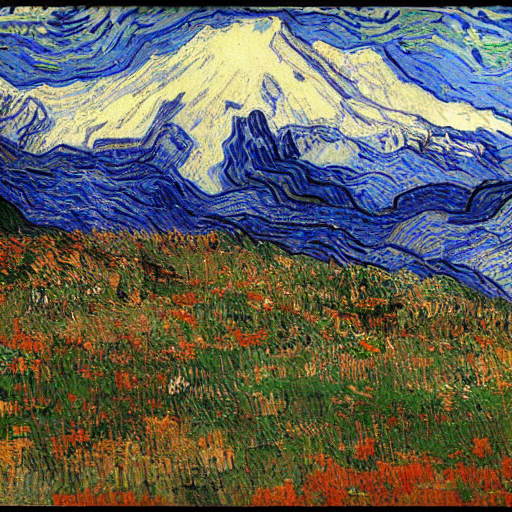In this example, we show how to build fast AIT modules for CLIP, UNet, VAE models, and benchmark/run them.
First, clone, build, and install AITemplate per the README instructions.
This AIT stable diffusion example depends on diffusers, transformers, torch and click.
Verify the library versions. We have tested transformers 4.21/4.22/4.23, diffusers 0.3/0.4 and torch 1.11/1.12.
>>> import transformers
>>> transformers.__version__
'4.21.2'
>>> import diffusers
>>> diffusers.__version__
'0.3.0'
>>> torch.__version__
'1.12.1+cu116'
Build the AIT modules by running compile.py. You must first register in Hugging Face Hub to obtain an access token for the Stable Diffusion weights. See user access tokens for more info. Your access tokens are listed in your Hugging Face account settings.
python3 examples/05_stable_diffusion/compile.py --token ACCESS_TOKEN
It generates three folders: ./tmp/CLIPTextModel, ./tmp/UNet2DConditionModel, ./tmp/AutoencoderKL. In each folder, there is a test.so file which is the generated AIT module for the model.
Compile the img2img models:
python3 examples/05_stable_diffusion/compile.py --img2img True --token ACCESS_TOKEN
AIT needs to do profiling to select the best algorithms for CUTLASS and CK.
To enable multiple GPUs for profiling, use the environment variable CUDA_VISIBLE_DEVICES on NVIDIA platform and HIP_VISIBLE_DEVICES on AMD platform.
This step is optional. You can run benchmark.py with the access token to initialize the weights and benchmark.
python3 examples/05_stable_diffusion/benchmark.py --token ACCESS_TOKEN
Run AIT models with an example image:
python3 examples/05_stable_diffusion/demo.py --token ACCESS_TOKEN
Img2img demo:
python3 examples/05_stable_diffusion/demo_img2img.py --token ACCESS_TOKEN
Check the resulted image: example_ait.png
Command: python3 examples/05_stable_diffusion/demo.py --token hf_xxx --prompt "Mountain Rainier in van Gogh's world"
Command: python3 examples/05_stable_diffusion/demo.py --token hf_xxx --prompt "Sitting in a tea house in Japan with Mount Fuji in the background, sunset professional portrait, Nikon 85mm f/1.4G"
Command: python3 examples/05_stable_diffusion/demo.py --token hf_xxx --prompt "A lot of wild flowers with North Cascade Mountain in background, sunset professional photo, Unreal Engine"
PT = PyTorch 1.12 Eager
OOM = Out of Memory
| Module | PT Latency (ms) | AIT Latency (ms) |
|---|---|---|
| CLIP | 9.48 | 0.87 |
| UNet | 60.52 | 22.47 |
| VAE | 47.78 | 37.43 |
| Pipeline | 3058.27 | 1282.98 |
- PT: 17.50 it/s
- AIT: 42.45 it/s
| Module | PT Latency (ms) | AIT Latency (ms) |
|---|---|---|
| CLIP | OOM | 0.85 |
| UNet | OOM | 40.22 |
| VAE | OOM | 44.12 |
| Pipeline | OOM | 2163.43 |
- PT: OOM
- AIT: 24.51 it/s
| Module | PT Latency (ms) | AIT Latency (ms) |
|---|---|---|
| CLIP | 6.16 | 2.98 |
| UNet | 78.42 | 62.18 |
| VAE | 63.83 | 164.50 |
| Pipeline | 4300.16 | 3476.07 |
- PT: 12.43 it/s
- AIT: 15.60 it/s
- Stable Diffusion with AIT batch inference, 50 steps
| Batch size | PT Latency (ms) | AIT Latency (ms) |
|---|---|---|
| 1 | 3058.27 | 1282.98 |
| 3 | 7334.46 | 3121.88 |
| 8 | 17944.60 | 7492.81 |
| 16 | OOM | 14931.95 |
- AIT Faster rendering, 25 steps
| Batch size | AIT Latency (ms) | AVG im/s |
|---|---|---|
| 1 | 695 | 0.69 |
| 3 | 1651 | 0.55 |
| 8 | 3975 | 0.50 |
| 16 | 7906 | 0.49 |
| Module | PT Latency (ms) | AIT Latency (ms) |
|---|---|---|
| Pipeline | 4163.60 | 1785.46 |
- For all benchmarks we render the images of size 512x512
- For img2img model we only support fix input 512x768 by default, stay tuned for dynamic shape support
- For NVIDIA A100, our test cluster doesn't allow to lock frequency. We make warm up longer to collect more stable results, but it is expected to have small variance to the results with locked frequency.
- To benchmark MI-250 1 GCD, we lock the frequency with command
rocm-smi -d x --setperfdeterminism 1700, wherexis the GPU id. - Performance results are what we can reproduced & take reference. It should not be used for other purposes.


